
Through the Looking-Glass, and What Alice Found There is a novel published on 27 December 1871 by Lewis Carroll, a mathematics lecturer at Christ Church, University of Oxford, and the sequel to Alice's Adventures in Wonderland (1865). Alice again enters a fantastical world, this time by climbing through a mirror into the world that she can see beyond it. There she finds that, just like a reflection, everything is reversed, including logic.
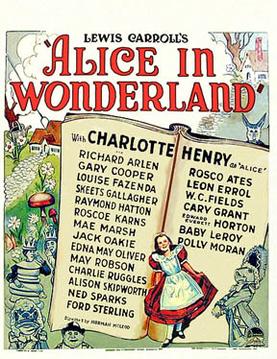
Alice in Wonderland is a 1933 American pre-Code fantasy film adapted from the novels by Lewis Carroll. The film was produced by Paramount Pictures, featuring an all-star cast. It is all live action, except for the Walrus and The Carpenter sequence, which was animated by Harman-Ising Studio.
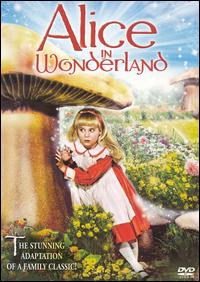
Alice in Wonderland is a 1985 American two-part made-for-television adventure family fantasy musical film of Lewis Carroll's books Alice's Adventures in Wonderland (1865) and Through the Looking-Glass (1871). An Irwin Allen production, it used a huge all-star cast of notable actors and actresses. The title role was played by Natalie Gregory, who wore a blonde wig for this miniseries. Alice in Wonderland was first telecast December 9, 1985, and December 10, 1985, at 8:00pm EST on CBS.

Alice in Wonderland is a 1951 American animated musical fantasy comedy film produced by Walt Disney Productions and released by RKO Radio Pictures. It is based on Lewis Carroll's 1865 novel Alice's Adventures in Wonderland and its 1871 sequel Through the Looking-Glass. The production was supervised by Ben Sharpsteen, and was directed by Clyde Geronimi, Wilfred Jackson, and Hamilton Luske. With the voices of Kathryn Beaumont, Ed Wynn, Richard Haydn, Sterling Holloway, Jerry Colonna, Verna Felton, J. Pat O'Malley, Bill Thompson, and Heather Angel, the film follows a young girl Alice who falls down a rabbit hole to enter a nonsensical world Wonderland that is ruled by the Queen of Hearts, while encountering strange creatures, including the Mad Hatter and the Cheshire Cat.
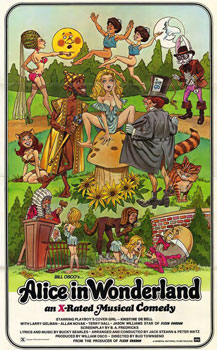
Alice in Wonderland is a 1976 American erotic musical comedy film loosely based on Lewis Carroll's 1865 book Alice's Adventures in Wonderland. The film expands the original story to include sex and broad adult humor, as well as original songs. The film was directed by Bud Townsend, produced by William Osco, and written by Bucky Searles, based on a concept by Jason Williams.
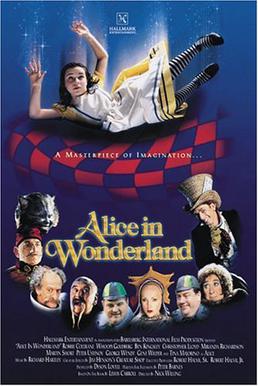
Alice in Wonderland is a 1999 made-for-television film adaptation of Lewis Carroll's books Alice's Adventures in Wonderland (1865) and Through the Looking-Glass (1871). It is currently the last production to adapt the original stories and was first broadcast on NBC and then shown on British television on Channel 4.

An unbirthday is an event celebrated on all days of the year which are not a person's birthday. It is a neologism which first appeared in Lewis Carroll's 1871 novel Through the Looking-Glass. The concept gave rise to "The Unbirthday Song" in the 1951 animated feature film Alice in Wonderland.

The Looking Glass Wars is a series of three novels by Frank Beddor, heavily inspired by Lewis Carroll's 1865 novel Alice's Adventures in Wonderland and its 1871 sequel Through the Looking-Glass. The premise is that the two books written by Lewis Carroll are a distortion of the "true story".

Alice's Adventures in Wonderland is a 1972 British musical film directed by Australian filmmaker William Sterling, based on Lewis Carroll's 1865 novel of the same name and its 1871 sequel, Through the Looking-Glass. It had a distinguished ensemble cast and a musical score composed by John Barry with lyrics written by Don Black. In addition, make-up artist Stuart Freeborn created film visuals based on the original drawings by John Tenniel from the first edition of the novel.

The Dormouse is a character in "A Mad Tea-Party", Chapter VII from the 1865 novel Alice's Adventures in Wonderland by Lewis Carroll.
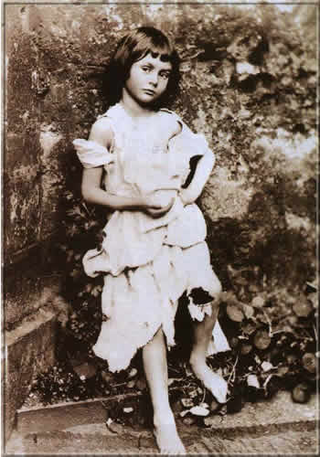
Through the Looking Glass is a chamber opera by the Australian composer Alan John to a libretto by Andrew Upton, based on Lewis Carroll's 1871 book and on the life of Alice Liddell, the girl for whom Carroll wrote the story's 1865 prequel, Alice's Adventures in Wonderland.

Alice in Wonderland is a 1915 American [[silent film| adaptation of Lewis Carroll's classic 1865 novel, Alice's Adventures in Wonderland, directed and written by W. W. Young and starring Viola Savoy as Alice.
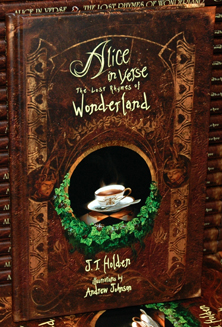
Alice in Verse: The Lost Rhymes of Wonderland (2010) is a reimagining of Lewis Carroll's 1865 novel Alice's Adventures in Wonderland written by British-American author J.T. Holden. It tells the story of Alice's Adventures in Wonderland in 19 rhyming poems, each written in the same style as Lewis Carroll's original verse. The book includes 36 illustrations by American artist Andrew Johnson.

The Westminster Alice is the name of a collection of vignettes written by Hector Hugh Munro (Saki) in 1902 and published by The Westminster Gazette of London. It is a political parody of Lewis Carroll's two books, Alice's Adventures in Wonderland (1865) and Through the Looking-Glass (1871).
A 1982 Broadway stage performance of Alice in Wonderland was telecast on PBS's Great Performances in 1983. Directed by Kirk Browning, it was produced by PBS affiliate WNET in New York. Black-and-white papier-mâché costumes aimed to re-create the book's original artwork by John Tenniel.
But Never Jam Today was a 1979 musical with music by Bert Keyes and Bob Larimer, lyrics by Larimer, and a book by both Larimer and Vinnette Carroll. The musical is based on the works of Lewis Carroll, and takes its title from the "jam tomorrow" discussion in Carroll's 1871 novel Through the Looking-Glass.
Alice in Wonderland and Through the Looking-Glass is a 2001 stage adaptation of Lewis Carroll's 1865 novel Alice's Adventures in Wonderland, and the 1871 novel Through the Looking-Glass. It was written by Adrian Mitchell.
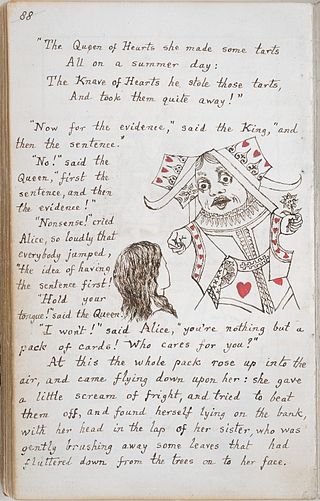
Alice's Adventures Under Ground is a 2016 one-act opera by Gerald Barry to his own libretto, based on Lewis Carroll's 1865 children's book Alice's Adventures in Wonderland and its 1871 sequel Alice Through the Looking-Glass. First performed in a concert staging at the Walt Disney Concert Hall, Los Angeles on 22 November 2016, it received its stage premiere at the Royal Opera House on 3 February 2020. The staging was a joint production by the Royal Opera House, Irish National Opera and Dutch National Opera, and was directed by Antony McDonald.
Alice in Wonderland is a 1962 Australian television film based on Lewis Carroll's 1865 novel Alice's Adventures in Wonderland. It was a pantomime and aired as part of the BP Super Show.
Alice Through the Looking Glass (1966), was a live action musical film made for television, directed by Alan Handley, and based on Lewis Carroll's 1871 novel Through the Looking-Glass. The show aired November 6, 1966 on NBC television in the United States. Bob Mackie and Ray Aghayan worked together on the costume designs, which won them an Emmy Award in 1967.



















